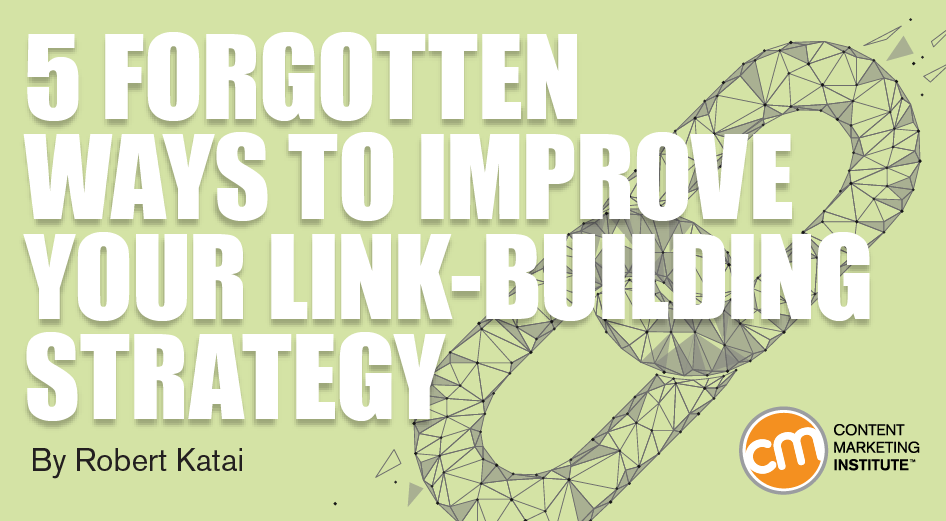
Referring domains and backlinks continue to be among the most important ranking factors, according to a SEMrush study of over 600,000 keywords.
That’s why a lucrative link-building strategy is vital and why you must stick to it regardless of what everybody else says or does. You already know you must have a clearly defined audience and create valuable content for it. You also probably recognize how publishing that content on third-party sites (i.e., guest blogging) is essential to link building.
But do you know these five less-obvious tips? They’re essential to every successful link-building strategy.
1. Free tools
Few things can be more effective in your link-building strategy than an app or tool to help your peers do something or learn how to do it better. People are inclined to link in their content to the best tools they can find in their industry.
Include free tools in your #content to attract backlinks. People are inclined to link to them in their content. @katairob #SEO Click To Tweet
For example, if you were crafting content about link building, you likely would include links to these quality tools: CoSchedule’s headline analyzer, Neil Patel’s Ubber Suggest, and SEMrush’s title generator.
Are there unique needs in your industry? What valuable tools, calculators, and quick-fix answers could you provide for your audience members? If they find them worthwhile, they are more likely to link to them in their content.
2. External reclamation and broken links
Broken or missing links are an ongoing problem for link-building management.
Broken links refer to links intended to direct users to a designated page that instead lead to another page, a non-existent page, or a 404 error response. These broken links can be problematic in search-engine rankings, but are easily corrected through communication. Contact the linking website owners or webmasters and ask them to repair the broken links. They are likely to fix them because they want their site visitors to see them as reliable sources.
You can identify broken links with tools such as Majestic. Track erroneous mentions on a spreadsheet with all the related issues.
Identify broken links with #tools like @Majestic, says @katairobi. #SEO Click To Tweet
Once you have the list, identify the contacts for each site, email them, and ask for a correction.
Link reclamation involves websites that mention you, your content, your products/services without linking to your site. Your request for a link may be met with more resistance than a request to fix a broken link. You may not receive a response from the website manager or your request may be declined based on the site’s linking policy. However, you should make the request and consider it a victory if you get a link.
3. Internal links
Internal broken links also can prove to be a source of problems in overall search-engine ranking.
To analyze the viability of your internal links, the best tool is Google Search Console (formerly known as Google Webmaster Tools).

Also, you should incorporate internal links on your pages. If you publish a new article that has information relevant to already published pages, link to that earlier content.
You should incorporate relevant internal links on your pages, says @katairobi. #SEO Click To Tweet4. Competitors’ links
When you find yourself out of inspiration for new content, go to your competitors’ links. Search for relevant articles and ideas that have significant traffic. Write an original piece and incorporate those highly valuable backlinks as citations.
Make your work easier with tools such as Ahrefs, which allows you to research your competitors more efficiently.

HANDPICKED RELATED CONTENT:
5. Link intersect
The term “link intersect” was made popular by an Ahrefs tool, which allows you to find out which sites link to your competition but not you. Based on this information, build relationships with those websites and create content that is more likely to be valued (and linked) by them.
Use @Ahrefs to identify sites linking to your competitors but not you, says @katairobi. #tools Click To Tweet
Which tip will you execute first?
Link building is an important part of any website-oriented marketing strategy. As an experienced content marketer, you already know that a strong foundation requires creating quality content that your clearly defined audience finds valuable. But digging deeper into the links themselves, your competitors, and other factors will enable you to develop your link-building strategy more fully.
What do you think about these tips? What else do you do to ensure that your content marketing program is effective at link building?
Please note: All tools included in our blog posts are suggested by authors, not the CMI editorial team. No one post can provide all relevant tools in the space. Feel free to include additional tools in the comments (from your company or ones that you have used).
Cover image by Joseph Kalinowski/Content Marketing Institute

